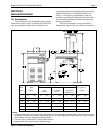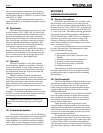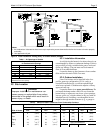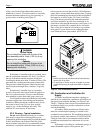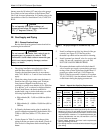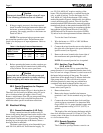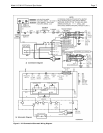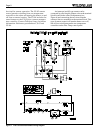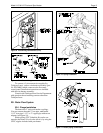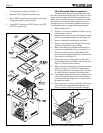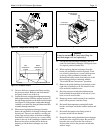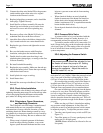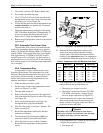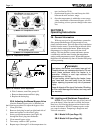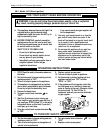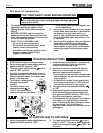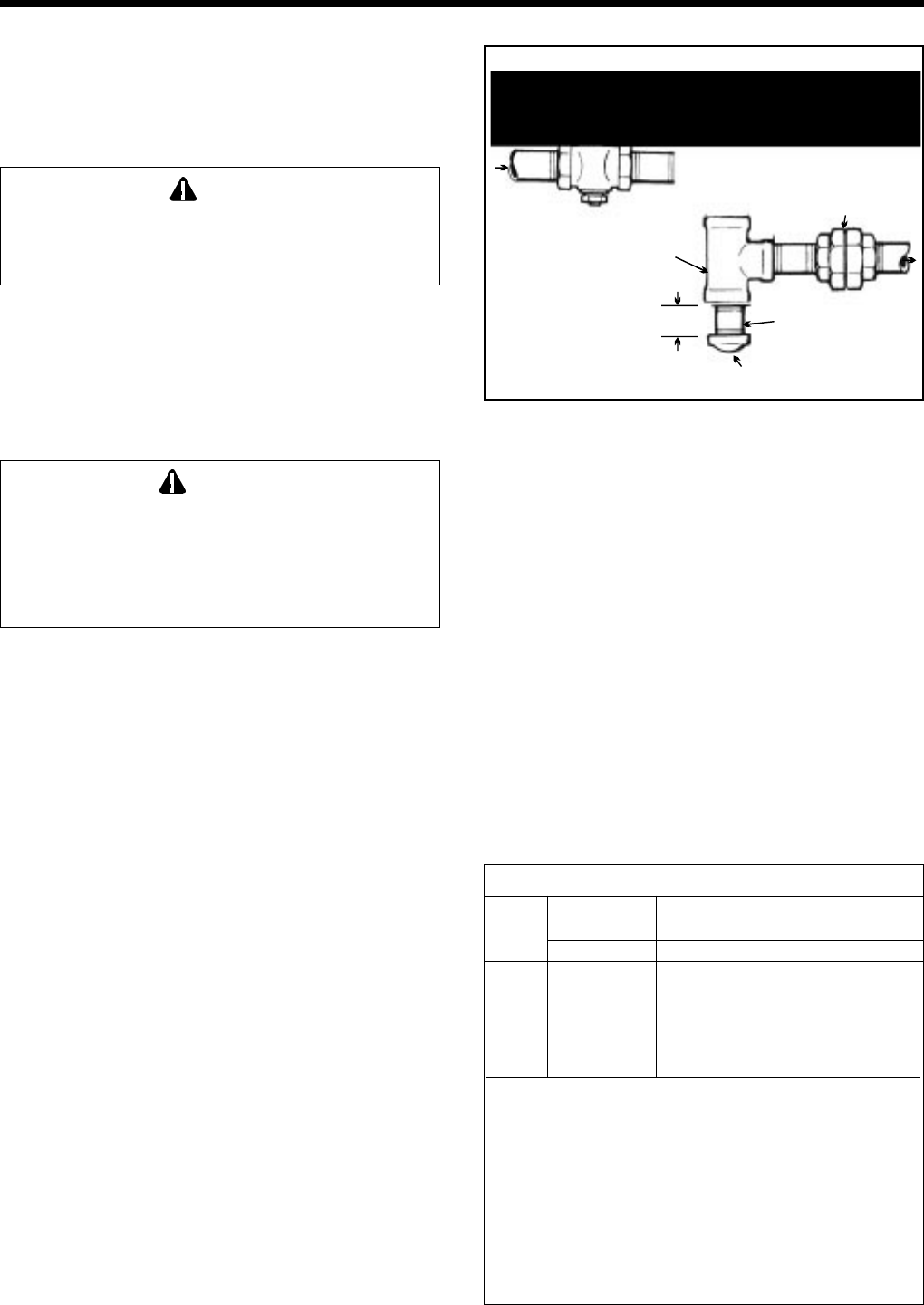
Model LLG & LLD Pool and Spa Heater
Page 5
5. Install a sediment trap (drip leg) ahead of the gas
controls (see Figure 5). Fit the trap with a
threaded cap which can be removed for cleaning.
6. Install a manual gas shutoff valve for service and
safety. Do not use a restrictive gas cock. DO
NOT USE GAS FLEXIBLE PIPING.
7. Disconnect the heater and its individual shutoff
valve from the gas supply system during pressure
testing of the system at pressures higher than 1/2
pounds per square inch (psi) (3.45 kilopascals
[kPa]). If the test pressure is equal to or less than
1/2 psi (3.45 kPa), close the manual shutoff valve
on the heater during the piping pressure test.
burners must be 18 inches (457 mm) above the garage
floor. Refer to the latest edition of the National Fuel
Gas Code for more information. In Canada, refer to the
latest edition of the Gas Installation Code, CAN/CGA
B149.
Caution
Do not operate this heater outdoors at
temperatures below 20 degrees Fahrenheit
(°F) (-7 degrees Celsius [°C]).
2E. Gas Supply and Piping
2E-1. General Instructions
Review the following general instructions before
continuing the installation.
WARNING
Do not convert this heater from natural gas to
propane gas, or propane to natural. Field
conversion could create carbon monoxide gas
which can cause property damage, serious
injury, or death.
1. Gas piping installation must be in accordance
with the latest edition of ANSI Z223.1. In
Canada, the installation must be in accordance
with CAN- B149.1 or .2 and all local codes that
apply.
2. Check the rating plate to make sure the heater is
fitted for the type of gas being used. Teledyne
Laars heaters shipped from the factory are
certified to operate at an altitude of 0 to 2000 feet
(0 to 609 m), or if so ordered, at higher altitudes.
In the United States, the heater manifold is
marked with a tag or sticker indicating one of the
following high altitude operation codes:
a. High altitude (H) - 2,000 to 6,000 feet (609 to
1829 m)
b. High altitude (J) - 6,000 to 10,000 feet (609 to
3048 m)
3. In Canada, the heater rating plate is marked for
specific altitude requirements: high altitude (H) is
2,000 to 4,500 feet (609 to 1372 m) above sea
level.
4. Use the figures in Table 3 to size the gas inlet
piping from the gas meter to the heater. Check all
local codes for compliance before installing the
heater.
Table 3. Natural Gas Pipe Size Requirements
Distance from Gas Meter
0-50 feet 50-100 feet 100-200 feet
Heater (0-15 m) (15-30 m) (30-60 m)
Size in. (mm) in. (mm) in. (mm)
125 3/4 (19) 1 (25.4) 1 (25.4)
175 1 (25.4) 1 (25.4) 1-1/4 (31.75)
250 1 (25.4) 1-1/4 (31.75) 1-1/4 (31.75)
325 1-1/4 (31.75) 1-1/4 (31.75) 1-1/2 (38)
400 1-1/4 (31.75) 1-1/2 (38) 1-1/2 (38)
Notes:
1. These numbers are for natural gas (0.65 Sp. Gr.) and are
based on 1/2 inch (13 mm) water column pressure drop.
Check supply pressure with a manometer, and local code
requirements for variations. For liquefied petroleum gas,
reduce pipe diameter one size, but maintain a 3/4 inch
(13 mm) minimum diameter.
2. Check supply pressure and local code requirements
before preceding with work.
3. Pipe fittings must be considered when determining gas
pipe sizing.
Manual Shutoff
Valve
Gas Supply
Inlet
To
Equipment
Inlet
Union
Cap
T-Fitting
3" Min.
Nipple
Figure 5. The proper design for a sediment trap / drip
leg.



